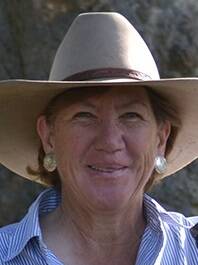Some 7,000 acres of pasture land in Ka‘u could become part of the Kapapala Forest Reserve as two state agencies bury a 20-year-old bureaucratic hatchet.
The Kapapala Ranch, encompassing about 31,000 acres in Ka‘u just north of Pahala, is the subject of a potential exchange between the state Department of Land and Natural Resources and the state Department of Agriculture as part of the fulfillment of a 2003 law aimed at ensuring Hawaii’s long-term agricultural productivity.
In 2003, Act 90 became law, which established a process whereby lands classified for agricultural use by the DLNR could be transferred to the DOA, which was deemed a more appropriate body to manage such properties.
However, because such transfers could only take place with the mutual consent of both agencies, relatively few transfers have taken place since Act 90 passed.
DLNR Land Division Assistant Administrator Kevin Moore told the Board of Land and Natural Resources in April that only 19,000 acres of more than 100,000 eligible acres have been set aside for the DOA.
“They have not been transferred either because the DOA doesn’t want them, or our department wants to retain their resource value,” Moore said, adding that the bulk of the eligible lands are consolidated in large pasture parcels tens of thousands of acres wide.
But the DLNR is changing its tune, albeit not necessarily by choice.
“Recently, due to increasing pressure from the (state) Legislature, the DLNR finds it needs to change its position so it can keep a driver’s seat for the whole issue,” Moore said in April. “Because if we continue to hold onto these lands … the Legislature would probably enact a law that says they go automatically.”
One of the first parcels to be transferred under this change in policy is the Kapapala Ranch, which the DLNR leased in 1975 to Gordon Cran, whose family has continued to run the ranch ever since.
At the BLNR’s next meeting on Friday, the panel will consider the transfer of about 25,000 acres of the ranch to the DOA, with the remaining 7,000 acres staying with the DLNR to expand the existing Kapapala Forest Reserve.
According to the proposal, more than a century of cattle ranching has led to deforestation of the land, which originally bore native koa and ‘ohi‘a forests. But some portions of the Kapapala Ranch still retain some native forest that could be restored through reforestation efforts, and it is that portion which would be added to the Forest Reserve, with the ranch lessees’ approval.
BLNR Chair Dawn Chang said in April said shifting the land to DOA control will be more favorable for the Cran family and other lessees, since DOA leases are negotiated with lessees, as opposed to DLNR’s policy of awarding leases at public auction.
This, she said, will allow lessees to seek better terms and will grant them peace of mind knowing that their leases won’t be auctioned off as they expire.
Lani Cran-Petrie, daughter of Gordon Cran, said in April that raising livestock on or near land that DLNR is trying to reforest has put the ranch at cross purposes with DLNR in the past.
“I did go out and visit (Kapapala Ranch),” Chang said. “I was very impressed by (the Cran’s) stewardship. There is no doubt in my mind that these are good stewards. They are not wasting — they are taking care of the lands. And when I came onboard DLNR, I knew we could not manage all of our 1.3 million acres of land by ourselves.”
While Friday’s BLNR meeting will decide whether to approve the transfer of land to DOA, the addition of the 7,000 acres to the Kapapala Forest Reserve will be contingent upon future public hearings.
Email Michael Brestovansky at mbrestovansky@hawaiitribune-herald.com.






